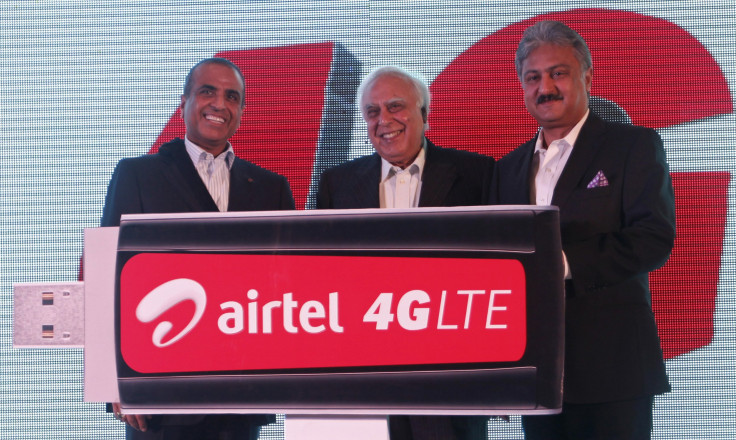4G LTE Rollout Makes India The World’s Next Big Smartphone Market

The U.S. smartphone market is well saturated, and a good portion of China’s 1.4 billion citizens have been using mobile devices for several years. So the next hot market for cell phones looks to be India, where carriers are in the early stages of rolling out high-speed 4G LTE networks for the first time. With billions in future sales at stake, handset makers, from China’s Xiaomi to local startups, are scrambling to get the first-mover’s advantage.
India is the fastest-growing country in the Asia-Pacific region for smartphone sales, but 4G is currently just a fraction of the market. Almost all of the more than 23 million smartphones it added in the three months ended Sep. 30 were those that are compatible only with relatively pokey 3G networks.
Interest in 4G LTE (long-term evolution) technology and in faster mobile Internet connections in general is growing, as more Indians expect to do more on their smartphones -- from finalizing presentations to buying gifts to booking holidays or even doctor appointments. “Indian subscribers will adopt 4G wholeheartedly to satiate their need for mobile data,” Arpita Pal Agrawal, telecom leader at PwC India, said recently. India will have as many as 15 million 4G connections by the end of 2015, Agrawal and her team estimate. Today that number is an insignificant portion of the country’s wireless base.
China’s handset makers, notably Xiaomi Inc. and Huawei Technology Co. Ltd., are gearing up to tap this anticipated growth. Xiaomi’s Redmi Note was possibly the first sub-10,000-rupee ($157) 4G smartphone to be launched in India when it was announced in November at 9,999 rupees. Also watch for Qihoo 360 Technology Co. Ltd., which recently struck a partnership with Coolpad Group Limited to build smartphones for the Asia-Pacific market and sell them online.
Motorola Mobility Holding, now part of Lenovo Group Limited, is also expected to bring its own 4G handsets at competitive prices to the Indian market, following the strong performance of its 3G Moto E and Moto G smartphones in online sales on India’s Flipkart. "Next year, we are going to be very aggressive in the 4G value proposition for the end user," Rick Osterloh, Motorola’s chief operating officer, told Economic Times in a recent interview.
But domestic players are not going to stand by and cede the market to offshore competitors. Micromax Informatics Ltd., based in Gurgaon, recently introduced the Yureka at 8,999 rupees. Lava International, of New Delhi, offers a range of Android-based devices. U.S. manufacturers such as Apple and Microsoft are also targeting the Indian market, with country-specific versions of the iPhone 6 and Windows Phone.
“The device ecosystem is already showing a positive trend for the 4G services,” as more smartphone vendors line up to launch affordable 4G handsets, said Tarun Pathak, a senior analyst in New Delhi with Hong Kong-based Counterpoint Technology Market Research. “As a result, we already have sub-$150 4G smartphones available,” he said.
At the same time, carriers such as Bharti Airtel Limited, the country’s largest wireless provider, and rival Reliance Jio Infocomm Ltd. and others are planning to either expand or roll out new 4G networks. “We bring the network.... [W]e want more people to get these (more affordable) handsets and use our networks,” Rohit Malhotra, who heads Bharti Airtel’s operations in the southern state of Karnataka, said at a joint event with Xiaomi on Nov. 25 in Bangalore. Xiaomi’s Redmi Note handsets will be sold at Bharti-operated customer outlets.
The rush to 4G in India isn’t surprising. The country’s rising class of urban professionals, often themselves employed in the tech industry, is driving big demand for social media platforms and apps that can help with work and everyday life. India has the most Facebook and Twitter users of any country outside of the U.S. Data-consuming instant messaging apps such as WhatsApp, which Facebook acquired this year, are also very popular among individual users and small businesses.
And larger Indian companies moved more work onto the cloud in 2014, with a corresponding increase in the demand for mobile services for staff as well as delivering services to customers on the smartphone. All of this sets the stage for an increase in mobile data usage and in turn for 4G LTE.
A Pan-Indian rollout will take well beyond 2015 to fully implement and remains contingent on myriad hurdles being overcome. “If you’re talking about mass-market adoption, which means 50, 60 or 70 million subscribers, we’re not there yet,” Jayanth Kolla, partner at Bangalore-based telecom consultancy Convergence Catalyst, said.
One reason: The current frequency band of 2300 MHz and the flavor of 4G technology that is being used in India, TD-LTE, isn’t the best option available. For instance, the reach of a cellular tower in this band is relatively weak, requiring more towers for effective delivery, Kolla said. The TD refers to “time division,” a method of separating the signals used to send and receive data using the same bandwidth.
A more popular 1800 MHz band will likely take off in 2015 with the FD-LTE technology. The FD refers to “frequency division,” where the available spectrum is divided into two channels -- one for sending and the other for receiving data. This technology is widely preferred by carriers, especially where the amount of spectrum at their disposal is constrained.
Eventually, if a government run auction goes through for spectrum in the 700 MHz band and companies ramp up their infrastructure, 4G might really take off in India, Kolla said.
© Copyright IBTimes 2024. All rights reserved.












